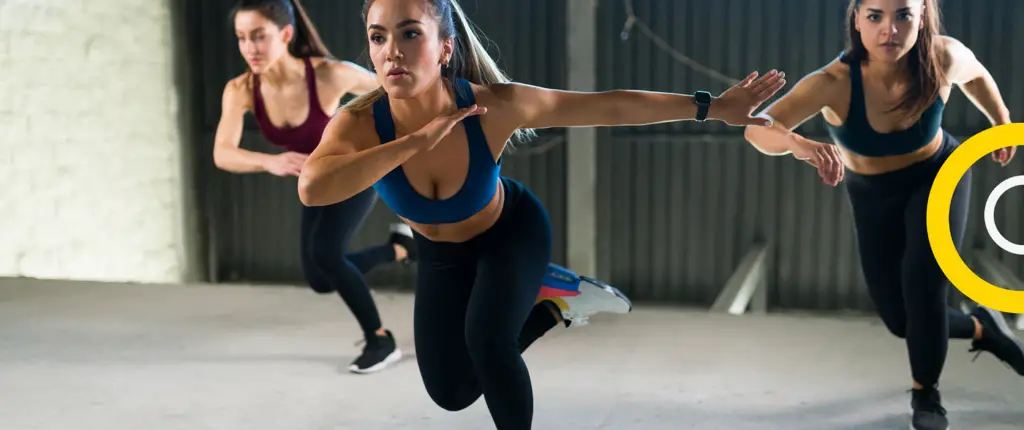In a world increasingly focused on efficiency, where time often feels like the ultimate luxury, High-Intensity Interval Training (HIIT) has emerged as a beacon of fitness innovation. This dynamic workout method, poised at the intersection of intensity and brevity, promises not just to get your heart racing, but also to maximize your results in minimal time.

As we delve into the mechanics of HIIT—exploring how it fundamentally works and the myriad benefits it offers—we uncover the secrets behind its explosive popularity. Whether you’re a seasoned athlete seeking to elevate your performance or a novice looking for an effective way to boost your health, understanding HIIT could be the key to transforming your fitness journey. Join us as we unlock the door to this exhilarating training style, revealing how it can reshape your approach to exercise and wellness.
Understanding the Mechanics of High-Intensity Interval Training
High-Intensity Interval Training (HIIT) is an innovative workout strategy that alternates short bursts of intense activity with periods of rest or low-intensity exercise. This approach leverages the body’s natural response to strenuous activity by pushing it to its limits for a specific time frame, drawing on anaerobic energy systems to fuel performance. The beauty of HIIT lies in its simplicity and adaptability, allowing individuals to tailor their workouts based on fitness levels and preferences. Some key components of HIIT include:
- Intensity: Each high-intensity segment should feel challenging and push you close to your maximum effort.
- Duration: Work intervals typically last from 20 seconds to 4 minutes, followed by equal or longer rest intervals.
- Variety: HIIT can encompass a wide range of exercises, from sprinting to bodyweight moves, making it versatile and engaging.
The physiological effects of HIIT are profound. During intense bursts of effort, the body rapidly consumes energy, depleting glycogen stores and prompting a metabolic boost long after the workout has ended. This phenomenon is known as excess post-exercise oxygen consumption (EPOC), which leads to increased calorie burn as the body works to restore itself to a pre-exercise state. Research has shown that HIIT can improve both anaerobic and aerobic fitness, making it effective for individuals seeking to enhance endurance and strength simultaneously.
As with any exercise regimen, it is essential to understand the balance between intensity and safety. HIIT workouts can be demanding, so proper technique and form are crucial to prevent injury. Beginners may benefit from lower intensity intervals to build confidence and stamina before progressing to more challenging routines. To illustrate this, consider the following guideline for varying your HIIT sessions:
| Fitness Level | Suggested Work Interval | Suggested Rest Interval |
|---|---|---|
| Beginner | 20-30 seconds | 60-90 seconds |
| Intermediate | 30-45 seconds | 30-60 seconds |
| Advanced | 1-4 minutes | 1-1.5 minutes |
Exploring the Science Behind HIIT and Its Impact on Metabolism
High-Intensity Interval Training (HIIT) has surged in popularity, not just among fitness enthusiasts but also among scientists eager to unravel its benefits for metabolism. At its core, HIIT involves short bursts of intense exercise followed by brief rest or lower-intensity periods. This unique approach triggers a metabolic response that is distinct from traditional exercise methods. In particular, during these intense sessions, the body rapidly utilizes carbohydrates and fats, leading to two key phenomena: excess post-exercise oxygen consumption (EPOC) and improved insulin sensitivity.
The physiological effects of HIIT extend far beyond the workout itself. Post-exercise, the body enters a recovery phase wherein oxygen consumption remains elevated, a process that can last for hours. This elevated oxygen consumption translates into increased calorie burn, thereby enhancing overall metabolic rate. The benefits of HIIT for metabolism encompass:
- Boosted calorie expenditure: Burn more calories even after the workout.
- Improved fat oxidation: More effective use of fat stores during exercise.
- Increased metabolic flexibility: Enhanced ability to switch between fuel sources.
Additionally, studies have shown that engaging in HIIT can lead to significant improvements in cardiovascular health and body composition, largely due to its efficiency. Compared to steady-state cardio, HIIT can yield similar or even superior results in a fraction of the time, making it both time-efficient and effective. The table below summarizes some metabolic markers before and after a HIIT regimen:
| Metabolic Marker | Before HIIT | After HIIT (8 weeks) |
|---|---|---|
| Resting Metabolic Rate (RMR) | 1,600 kcal/day | 1,800 kcal/day |
| Body Fat Percentage | 25% | 20% |
| Insulin Sensitivity | 1.0 | 1.5 |
Transformative Health Benefits: What HIIT Can Do for Your Body
High-Intensity Interval Training (HIIT) is more than just a fitness trend; it’s a revolutionary approach that offers transformative health benefits. Unlike traditional steady-state workouts, HIIT alternates periods of intense effort with short recovery times, leading to remarkable outcomes for your body and overall health. One of the primary advantages is enhanced metabolic rate. After a HIIT session, your body continues to burn calories at an elevated rate, a phenomenon known as the “afterburn effect” or excess post-exercise oxygen consumption (EPOC).
Another significant benefit of HIIT is its ability to improve cardiovascular health in a relatively short amount of time. Studies have shown that just a few minutes of high-intensity activity can yield the same cardiovascular gains as longer durations of moderate exercise. Additionally, HIIT can boost your heart rate and increase aerobic and anaerobic endurance, making everyday activities feel more manageable and enhancing your athletic performance. Here are some key benefits related to cardiovascular health:
- Increases VO2 max: Enhances the oxygen-using capacity of your body.
- Reduces blood pressure: Can help lower systolic and diastolic blood pressure levels.
- Improves cholesterol levels: Can contribute to better HDL and LDL cholesterol ratios.
Lastly, HIIT is highly effective for fat burning and body composition improvement. The combination of increased muscle engagement and elevated heart rate leads to significant reductions in body fat, supporting not just weight loss but fat distribution changes. The following table summarizes the impact of HIIT on body composition compared to traditional exercise:
| Type of Exercise | Caloric Burn | Fat Loss Potential | Time Efficiency |
|---|---|---|---|
| HIIT | High | Superior | Excellent |
| Steady State | Moderate | Moderate | Good |
By incorporating HIIT into your exercise routine, you can revel in these advantages, all while spending less time working out. This efficient, dynamic workout not only optimizes your physical health but also enhances your mental resilience, making it an invaluable addition to any fitness regimen.
Designing Your Perfect HIIT Routine for Maximum Results
- Burpees
- High Knees
- Squat Jumps
- Mountain Climbers
- Push-Ups
Next, determine the intervals that suit your current fitness level. For beginners, consider starting with 20 seconds of intense effort followed by 40 seconds of rest. As you build endurance, you could shift to a 30/30 or even a 45/15 ratio. A well-structured routine might look like this:
| Exercise | Duration | Rest |
|---|---|---|
| Burpees | 30 seconds | 30 seconds |
| High Knees | 30 seconds | 30 seconds |
| Squat Jumps | 30 seconds | 30 seconds |
| Mountain Climbers | 30 seconds | 30 seconds |
| Push-Ups | 30 seconds | 30 seconds |
remember to include a cool down after your session. Spend 5-10 minutes stretching and allowing your heart rate to gradually decrease. Incorporating a variety of exercises into your routine not only keeps things interesting, but also prevents plateaus and promotes full-body conditioning. Feel free to experiment with different movements each week to find what works best for you, and always listen to your body to avoid overexertion.
Common Mistakes to Avoid for an Effective HIIT Experience
Engaging in High-Intensity Interval Training (HIIT) can lead to remarkable fitness improvements, but certain missteps can diminish its effectiveness. One common pitfall is skipping the warm-up. Neglecting this crucial phase can increase the risk of injury and reduce performance during intense intervals. Take just 5-10 minutes to prepare your muscles and cardiovascular system, facilitating a smoother transition into high-intensity efforts.
Another frequent error is poor form during exercises. In a rush to maximize intensity, many participants sacrifice technique, which not only hampers results but can lead to injury. Always prioritize quality over quantity, ensuring that you execute movements correctly. If you’re unsure about your form, consider practicing at a lower intensity or consulting a trainer for guidance. Remember, a well-executed exercise is more beneficial than a poorly performed one, no matter the speed.
Lastly, many individuals underestimate the importance of recovery. HIIT is demanding, and incorporating proper rest between intervals is vital for performance and safety. Without adequate recovery, fatigue can set in too quickly, leading to diminished effectiveness and motivation. Implement a balanced schedule, ideally allowing for at least 48 hours of recovery for the same muscle groups. Here’s a simple table to help you gauge your recovery periods:
| Intensity Level | Rest Duration |
|---|---|
| Low | 15-30 seconds |
| Moderate | 30-60 seconds |
| High | 1-2 minutes |
Concluding Remarks
As we draw the curtains on our exploration of High-Intensity Interval Training, it’s clear that this dynamic workout regime is more than just a fleeting fitness trend. With its unique blend of intensity and efficiency, HIIT stands out as a powerful ally in our quest for health and well-being.
Whether you’re a seasoned athlete or a beginner looking to embark on a fitness journey, the versatility of HIIT allows for customizable workouts that can cater to any level of experience. By incorporating short bursts of intense activity followed by periods of rest or lower-intensity exercises, HIIT not only boosts cardiovascular fitness but also ignites the metabolism and enhances muscle endurance.
The science behind it is compelling, but the real magic lies in its accessibility and adaptability. So, whether you prefer to sweat it out in the gym, in a park, or within the comfort of your own home, HIIT empowers you to take control of your fitness routine. Embrace the challenge, unleash your potential, and watch as you discover the myriad benefits that this high-octane training can provide. The journey is yours to take—are you ready to make the leap?




